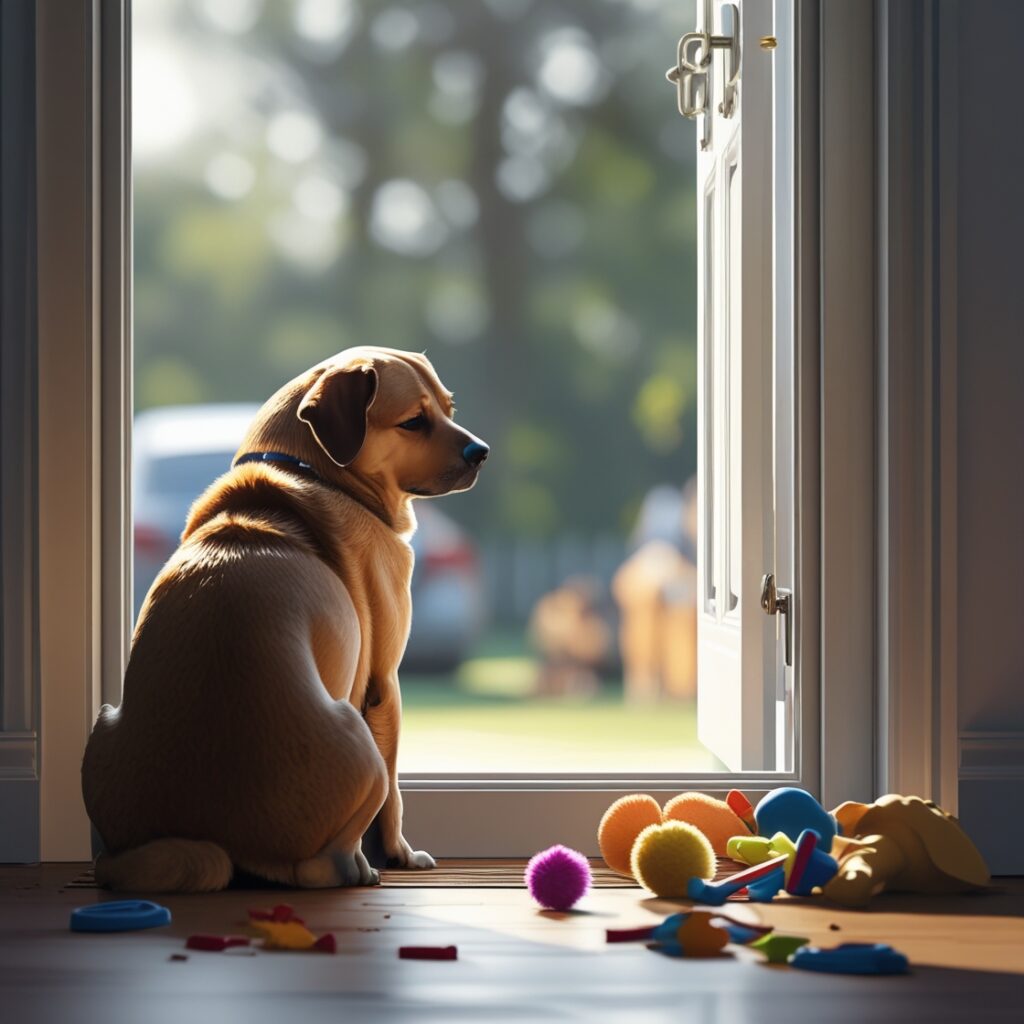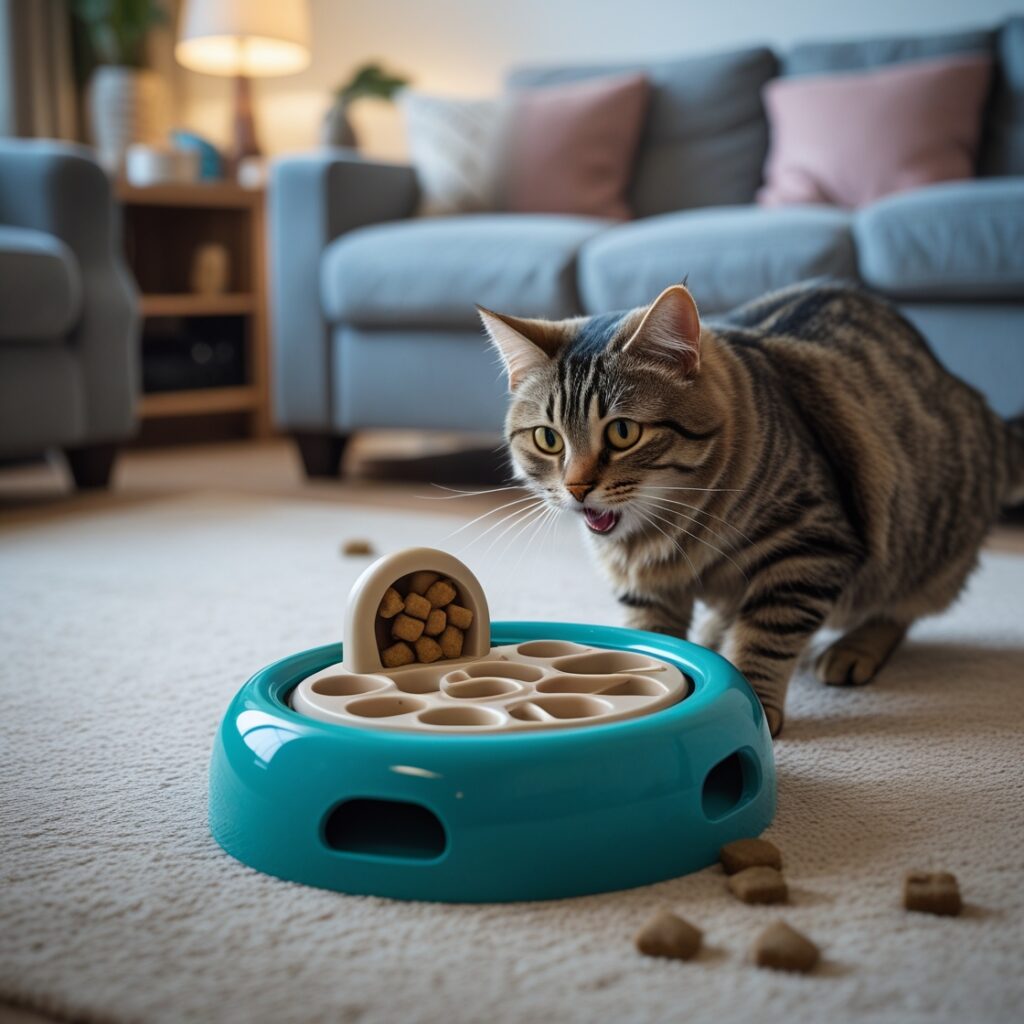Is your furry friend turning into a panic-stricken mess every time you leave the house? 🐾😰 You’re not alone. Separation anxiety in dogs and cats is a common yet distressing issue that affects countless pet parents worldwide. From incessant barking to destructive behavior, the symptoms can be overwhelming for both pets and their owners.
But here’s the good news: you don’t have to live with this constant worry. Understanding and addressing separation anxiety is key to restoring peace in your home and ensuring your pet’s well-being. Whether you’re dealing with a clingy kitten or an anxious pup, there are effective strategies to help your four-legged friend feel secure, even when you’re not around.

In this comprehensive guide, we’ll dive into the world of pet separation anxiety, exploring everything from its root causes to long-term solutions. We’ll uncover preventive measures, management techniques, and ways to support your pet during your absences. So, if you’re ready to transform your pet’s distress into calm confidence, let’s embark on this journey together and discover how to strengthen the bond with your furry companion, one step at a time. 🐱🐶💕
Understanding Separation Anxiety in Pets
A. Recognizing the signs in dogs
Dogs with separation anxiety often exhibit distinctive behaviors when left alone or anticipating their owner’s departure. Common signs include:
- Excessive barking, howling, or whining
- Destructive chewing or digging
- Pacing or restlessness
- Attempts to escape
- Excessive drooling or panting
- Inappropriate elimination indoors
| Severity | Behavioral Signs | Physical Signs |
|---|---|---|
| Mild | Mild whining, slight pacing | Slightly increased heart rate |
| Moderate | Barking, scratching at doors | Panting, restlessness |
| Severe | Destructive behavior, escape attempts | Excessive drooling, self-harm |
B. Identifying symptoms in cats
While less common, cats can also experience separation anxiety. Signs to watch for include:
- Excessive vocalization (meowing, yowling)
- Inappropriate elimination outside the litter box
- Destructive scratching or chewing
- Over-grooming or self-harming behaviors
- Loss of appetite or overeating
- Vomiting or diarrhea when left alone
C. Common triggers for separation anxiety
Several factors can contribute to the development of separation anxiety in pets:
- Changes in routine or environment
- Traumatic experiences
- Lack of proper socialization
- Genetic predisposition
- Over-attachment to owners
D. Impact on pet health and well-being
Separation anxiety can significantly affect a pet’s quality of life, leading to:
- Chronic stress and decreased immune function
- Weight loss or gain
- Injuries from escape attempts or destructive behaviors
- Deterioration of human-animal bond
- Increased risk of rehoming or abandonment
Now that we’ve explored the signs and impacts of separation anxiety in pets, let’s delve into preventive measures to help our furry friends cope better with alone time.
Preventing Separation Anxiety
Early socialization techniques
Early socialization is crucial in preventing separation anxiety in pets. Expose your puppy or kitten to various people, animals, and environments during their critical developmental period (3-16 weeks for puppies, 2-7 weeks for kittens). This helps build confidence and reduces anxiety later in life.
- Organize puppy/kitten playdates
- Take your pet to different locations
- Introduce various sounds and textures
- Encourage positive interactions with strangers
Gradual desensitization to alone time
Start with short periods of separation and gradually increase the duration. This helps your pet build tolerance and confidence when left alone.
| Duration | Frequency | Activities |
|---|---|---|
| 5 minutes | 3-4 times daily | Leave the room |
| 15 minutes | 2-3 times daily | Step outside |
| 30 minutes | 1-2 times daily | Short errand |
| 1 hour+ | As needed | Longer absences |
Creating a comfortable environment
Ensure your pet feels safe and secure when alone. Provide a designated area with:
- Cozy bedding
- Favorite toys
- Calming music or white noise
- Pheromone diffusers (e.g., Adaptil for dogs, Feliway for cats)
Establishing consistent routines
Pets thrive on predictability. Maintain a regular schedule for:
- Feeding times
- Walks or playtime
- Bedtime routines
- Departure and arrival cues
Exercise and mental stimulation
A tired pet is less likely to experience anxiety. Provide ample physical and mental exercise:
- Daily walks or play sessions
- Interactive toys and puzzles
- Training exercises
- Scent work or food-dispensing toys
By implementing these preventive measures, you can significantly reduce the likelihood of separation anxiety developing in your pet. Remember, consistency and patience are key in helping your furry friend feel secure when alone. In the next section, we’ll explore effective management strategies for pets already experiencing separation anxiety.

Effective Management Strategies
Positive reinforcement training
Positive reinforcement training is a powerful tool for managing separation anxiety in pets. This approach focuses on rewarding desired behaviors, helping your dog or cat associate your absence with positive experiences. Start by gradually increasing the duration of your departures, rewarding your pet with treats or praise for calm behavior. Use a consistent departure cue, such as picking up your keys, to help your pet understand when you’re leaving.
| Training Step | Description | Reward |
|---|---|---|
| Short absences | Leave for 30 seconds to 1 minute | Treat or praise |
| Gradual increase | Extend absence time by 5-10 minutes | High-value treat |
| Consistent cue | Use the same departure routine | Favorite toy or game |
Calming aids and products
Various calming aids can help soothe anxious pets during your absence:
- Pheromone diffusers (e.g., Feliway for cats, Adaptil for dogs)
- Anxiety wraps or thunder shirts
- Calming music or white noise machines
- Interactive toys that dispense treats
Distraction techniques
Keeping your pet engaged while you’re away can significantly reduce anxiety:
- Puzzle toys filled with treats
- Kong toys stuffed with frozen peanut butter
- Scent games (hide treats around the house)
- Automated treat dispensers or pet cameras
Medication options
For severe cases of separation anxiety, veterinarian-prescribed medications may be necessary. These can include:
- SSRIs (Selective Serotonin Reuptake Inhibitors)
- Tricyclic antidepressants
- Anti-anxiety medications
Always consult with a veterinarian before starting any medication regimen, as they can assess your pet’s specific needs and potential side effects.
With these effective management strategies in place, you’ll be better equipped to support your pet during absences. Next, we’ll explore how to address severe cases of separation anxiety that may require more intensive interventions.
Addressing Severe Cases
Professional behavioral therapy
Professional behavioral therapy can be a game-changer for pets with severe separation anxiety. These specialized therapists use evidence-based techniques to address the root causes of anxiety and develop tailored treatment plans.
- Cognitive-behavioral therapy
- Desensitization exercises
- Counter-conditioning techniques
A typical treatment plan may include:
| Phase | Duration | Focus |
|---|---|---|
| Assessment | 1-2 sessions | Identify triggers and severity |
| Treatment | 4-8 weeks | Implement behavior modification |
| Follow-up | 2-4 sessions | Evaluate progress and adjust |
Veterinary consultations
Veterinarians play a crucial role in managing severe separation anxiety cases. They can:
- Conduct thorough health checks
- Prescribe anxiety-reducing medications
- Recommend complementary therapies
Specialized training programs
Intensive training programs can provide structure and support for both pets and owners. These programs often include:
- One-on-one sessions with certified trainers
- Group classes for socialization
- At-home exercises and routines
By combining professional therapy, veterinary care, and specialized training, pet owners can effectively address severe separation anxiety. This comprehensive approach targets both the psychological and physiological aspects of anxiety, offering the best chance for long-term improvement. With patience and consistency, even the most anxious pets can learn to cope with being alone. Next, we’ll explore strategies for supporting your pet during necessary absences.
Supporting Your Pet During Absences
Interactive toys and puzzles
Keeping your pet engaged during your absence is crucial for managing separation anxiety. Interactive toys and puzzles provide mental stimulation and can help distract your furry friend from their anxiety. Here are some popular options:
- Treat-dispensing toys
- Puzzle feeders
- Kong toys filled with frozen treats
- Snuffle mats for dogs
- Automatic ball launchers
| Toy Type | Benefits | Best For |
|---|---|---|
| Treat-dispensing | Encourages problem-solving | Dogs and cats |
| Puzzle feeders | Slows down eating, provides entertainment | Dogs and cats |
| Kong toys | Long-lasting distraction | Dogs |
| Snuffle mats | Mimics natural foraging behavior | Dogs |
| Ball launchers | Physical exercise and mental stimulation | Active dogs |
Calming music or white noise
Background sounds can help mask outside noises and create a soothing environment for your pet. Consider playing:
- Classical music
- Specially composed pet relaxation music
- Nature sounds
- White noise
Comforting scents and familiar objects
Familiar scents can provide comfort to your pet when you’re away. Try these strategies:
- Leave a piece of clothing with your scent
- Use pheromone diffusers designed for pets
- Place their favorite blanket or bed in a quiet area
Pet cameras and monitoring systems
Technology can help you stay connected with your pet and monitor their behavior:
- Two-way audio cameras for communication
- Treat-dispensing cameras for remote interaction
- Motion-activated alerts to track activity
These tools not only provide peace of mind but also allow you to intervene if your pet shows signs of distress. With these supportive measures in place, you’ll be better equipped to help your pet cope with your absences. Next, we’ll explore long-term solutions for pet parents dealing with separation anxiety.
Long-term Solutions for Pet Parents
Flexible work arrangements
In today’s evolving work landscape, pet parents have more options than ever to balance their careers with their pets’ needs. Remote work and flexible schedules can significantly reduce separation anxiety in pets. Here’s a comparison of common flexible work arrangements:
| Arrangement | Benefits for Pets | Considerations |
|---|---|---|
| Remote work | Constant presence | Work-life balance |
| Flex hours | Shorter alone time | Coordination with team |
| Job sharing | Regular breaks | Income impact |
Consider discussing these options with your employer, emphasizing the productivity benefits of reduced stress about your pet’s well-being.
Pet sitters and dog walkers
Professional pet care services can provide crucial support for working pet parents. A reliable pet sitter or dog walker can:
- Offer companionship and exercise
- Maintain your pet’s routine
- Provide mental stimulation
- Alert you to any concerns
When selecting a service, prioritize experienced professionals who can handle anxiety-prone pets. Introduce them gradually to build trust and familiarity.
Doggy daycare options
For highly social dogs, daycare can be an excellent solution to separation anxiety. Benefits include:
- Constant supervision
- Socialization with other dogs
- Physical exercise
- Mental stimulation through play and training
Research local facilities thoroughly, ensuring they have appropriate staff-to-dog ratios and anxiety management protocols.
Adopting a companion animal
In some cases, adopting another pet can alleviate separation anxiety. However, this decision requires careful consideration:
- Ensure your current pet is receptive to a new companion
- Choose a pet with a compatible temperament
- Introduce them gradually and supervise interactions
- Be prepared for potential challenges in the adjustment period
Remember, while a companion can provide comfort, it’s not a guaranteed solution and should be combined with other strategies for managing separation anxiety.
Conclusion
Separation anxiety in dogs and cats can be a challenging issue for pet parents, but with the right approach, it can be managed effectively. By understanding the root causes, implementing preventive measures, and employing various management strategies, you can help your furry friend feel more secure when left alone. Remember to be patient and consistent in your efforts, as overcoming separation anxiety takes time and dedication.

If your pet’s anxiety persists or worsens, don’t hesitate to seek professional help from a veterinarian or animal behaviorist. With the right support and a commitment to your pet’s emotional well-being, you can create a harmonious home environment where both you and your four-legged companion can thrive, even during times of separation.



